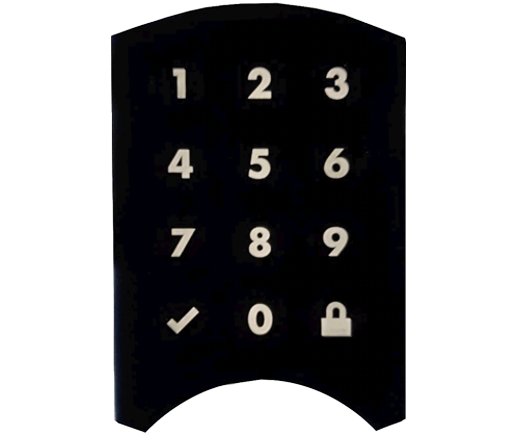Understanding the Conveniences and Value of Switch Backlighting in Interface
Switch backlighting offers as a vital component in individual interface design. It boosts visibility, particularly in dimly lit atmospheres, and aids in the navigation of devices for all users. This feature not just cultivates customer self-confidence yet additionally advertises inclusivity for those with aesthetic disabilities. As innovation develops, the implications of switch backlighting continue to expand. Recognizing its complex advantages might reveal much deeper understandings into its function in modern-day device communication.
The Role of Switch Backlighting in Individual Interfaces
Switch backlighting offers a crucial feature in individual interfaces, enhancing both usability and accessibility. It gives aesthetic comments to users, showing the status and capability of numerous controls. This feature aids customers promptly recognize energetic or inactive buttons, promoting efficient communication. By brightening the controls, backlighting decreases the likelihood of errors, as customers can quickly recognize their choices.
In addition, Switch backlighting adds to a natural layout aesthetic, usually incorporating seamlessly into the general appearance of the interface. It permits designers to create intuitive experiences that direct individuals through complex systems. Furthermore, backlighting can be customized, enabling producers to line up shades and strengths with brand identities, additionally boosting customer involvement.
In environments where user attention is divided, the quality provided by switch backlighting ends up being even a lot more significant. Generally, this feature plays an essential role in ensuring that user interfaces are both visually attractive and practical.
Enhancing Exposure in Low-Light Conditions
Just how can interface effectively preserve performance in low-light problems? One crucial approach is via the implementation of switch backlighting. This attribute enhances the presence of controls and signs in dim environments, guaranteeing users can communicate with devices without stressing their eyes or thinking the performance of numerous components. By illuminating switches, backlighting gives a clear visual sign, decreasing mistakes and improving customer confidence when maneuvering via user interfaces.

Furthermore, the strategic use of color and strength in backlighting can help users in comparing different functions and conditions, better improving use. Efficient backlighting not only adds to a cosmetically pleasing layout yet additionally promotes security, particularly in scenarios where fast actions are necessary. In conclusion, switch backlighting is a necessary aspect that greatly improves presence and functionality of interface in low-light problems, promoting a smooth user experience.
Improving Ease Of Access for All Users
Improving ease of access in interface involves improving visual clarity to suit varied customer requirements. Efficient backlighting not just benefits nighttime use however also plays a crucial function in guaranteeing ample shade comparison for those with aesthetic disabilities. By focusing on these factors, developers can create much more inclusive and straightforward environments for all individuals.

Improved Visual Clarity
Clearness in aesthetic style plays a vital function in making sure that customer interfaces come to every person, no matter of their capabilities. Switch backlighting considerably enhances aesthetic clearness by offering clear visual signs that assist users in interacting with interface elements. This function is especially valuable for individuals with visual disabilities, as it aids them compare various controls and their states. Backlighting can reduce cognitive lots by making information much easier to refine. Users can promptly identify active buttons or switches, promoting smoother navigating and communication. By incorporating switch backlighting, designers promote inclusivity and use, allowing all customers to involve with technology successfully. Eventually, boosted visual quality via backlighting fosters an extra user-friendly experience throughout diverse user groups.
Nighttime Usability Conveniences
Switch backlighting not just enhances visual quality but additionally uses significant benefits for nighttime usability, making interfaces more available for all individuals. This feature is specifically helpful in low-light environments, where typical displays may be difficult to check out. The lighting supplied by backlit buttons allows users to communicate with gadgets without straining their eyes or interrupting their surroundings. In addition, it sustains customers with visual problems by providing necessary cues in dark setups. Therefore, switch backlighting adds to a more comprehensive experience, suiting varying levels of visual ability and making sure that all users can browse user interfaces efficiently, despite the moment of day. Inevitably, this functionality cultivates a much more easy to use atmosphere for every person.
Color Contrast Considerations
Shade comparison plays a vital duty in boosting availability within interface. High-contrast styles assure that customers, including those with aesthetic impairments and color loss of sight, can quickly distinguish between different elements. This is particularly important for switch backlighting, as reliable comparison aids users identify inactive versus energetic states of switches. Implementing appropriate shade mixes-- such as light text on dark histories or the other way around-- boosts readability and individual experience. Furthermore, adherence to developed comparison ratio guidelines, such as the Internet Web Content Availability Guidelines (WCAG), promotes inclusivity. By prioritizing shade comparison, designers can develop user interfaces that fit diverse users, permitting for more effective and instinctive communication with innovation. Eventually, thoughtful color selections enhance functionality for all people, advertising visit their website an inclusive electronic atmosphere.
Creating an Immersive Gaming Experience
In the domain of video gaming, boosted visual hints can substantially raise player interaction and communication with the atmosphere. By utilizing vibrant atmosphere development via switch backlighting, developers can craft immersive experiences that react to in-game actions. This combination not just captivates gamers however also grows their emotional link to the video game globe.
Boosted Aesthetic Hints
Improved visual hints play an important role in producing an immersive gaming experience, allowing players to involve even more deeply with the online environment. Switch backlighting can improve these cues by illuminating controls, making them easily identifiable throughout gameplay. This feature not only aids in navigation however likewise enhances the thematic and psychological elements of the game. For instance, various shades or intensities can represent different activities or states, giving instant comments to gamers. Such aesthetic signs can boost situational recognition, assisting players make fast decisions. Furthermore, backlighting can add to the general visual, balancing with the game's style and narrative. By doing this, improved visual hints boost gamer experience, promoting a stronger connection to the video game globe.
Dynamic Ambience Development
Switch backlighting not only boosts aesthetic cues however also plays a significant role in dynamic ambience creation within pc gaming environments. By adjusting to in-game events, these lit up switches can boost the total immersion and psychological influence of gameplay. Throughout intense battles, red backlighting may increase tension, while soothing blue shades can produce a sense of calm during expedition stages. This responsive lights adds to a more appealing user experience, allowing players to feel more connected to their online environments. Additionally, customizable backlighting alternatives enable players to personalize their interfaces, even more improving their gaming experience. This way, switch backlighting offers as an effective tool for designers intending to craft immersive and unforgettable video gaming ambiences.
Increasing Usability for Everyday Instruments
As innovation remains to permeate day-to-day life, the relevance of intuitive user interfaces becomes progressively clear. Switch backlighting works as an essential attribute that improves usability throughout various day-to-day tools, such as push-button controls, home appliances, and smart devices (Switch Backlighting). By brightening controls, backlighting assists customers rapidly determine and operate functions, specifically in low-light conditions. This not only lowers irritation but additionally minimizes errors, thereby boosting total user complete satisfaction
Backlighting can provide aesthetic feedback, showing whether a gadget is powered on or off. This attribute is specifically valuable for users with aesthetic problems, as it makes controls extra accessible. In settings where fast action times are vital, such as offices or kitchen areas, well-designed backlighting can significantly simplify communications. Ultimately, integrating switch backlighting right into everyday devices promotes an extra user-friendly experience, stressing the need for thoughtful design in technology that effortlessly incorporates right into day-to-day routines.
Design Factors To Consider for Efficient Backlighting
Effective backlighting layout calls for careful factor to consider of different factors to guarantee suitable usability. One important element is the strength of the backlighting; it should be intense sufficient to enhance visibility without triggering glare or eye stress. Color temperature likewise plays a necessary function; warmer tones can produce a much more inviting atmosphere, while cooler tones may enhance emphasis and awareness.

Customer choices and ecological elements, such as ambient light levels, need to likewise notify backlighting design. Finally, customization options can improve the user experience, permitting people to change brightness or color settings to suit their requirements. By resolving these components, developers can create efficient backlighting that significantly enhances user interface use.
Future Fads in Switch Backlighting Modern Technology
With developments in technology, the future of switch backlighting is positioned for significant advancement. Emerging fads indicate a change towards customizable backlighting systems that enable individuals to readjust shade, brightness, and patterns according to personal preferences or situational requirements. This versatility enhances the customer experience by supplying a much more intuitive user interface.
In addition, assimilation with smart home systems is prepared for, making it possible for buttons to respond dynamically to environmental factors such as ambient light or user task. Energy-efficient LED innovation will certainly continue to dominate, supplying longer lifespans and minimized power intake.
Growths in materials science might also cause cutting-edge designs, such as adaptable or transparent backlighting choices that can be embedded into different surfaces seamlessly. As individual interfaces end up being progressively innovative, the need for innovative switch backlighting services will drive recurring research and advancement in the area, making certain that performance and looks evolve in tandem.
Often Asked Concerns
Just How Does Switch Backlighting Impact Battery Life in Devices?
Switch backlighting can significantly affect battery life in gadgets. When triggered, it takes in extra power, possibly lowering total battery long life. Conversely, efficient backlighting technology might decrease this drainpipe, stabilizing presence and power preservation properly.
Exist Various Kinds of Switch Backlighting Technologies?
Different switch backlighting technologies exist, including LED, OLED, and fiber optics. Each modern technology offers unique benefits regarding illumination, energy performance, and style flexibility, accommodating various user preferences and gadget needs.
Can Switch Backlighting Be Customized by Customers?
Switch backlighting can undoubtedly be tailored by individuals, permitting for individualized lighting impacts, shades, and brightness levels (Switch Backlighting). This adaptability enhances user experience, accommodating private choices and enhancing accessibility in various lighting conditions
What Products Are Frequently Utilized for Switch Backlighting?
Typical materials made use of for switch backlighting include LEDs for illumination, acrylic or polycarbonate for diffusing light, and numerous plastics for housing. These products guarantee durability, reliable light distribution, and improve aesthetic appeal in individual interfaces.
How Does Switch Backlighting Impact the Total Style Aesthetic?
Switch backlighting substantially influences overall design aesthetic by boosting visual charm, developing climatic effects, and making certain functionality in low-light conditions. It permits developers to integrate innovation flawlessly into atmospheres, raising both design and customer experience.
Switch backlighting serves as an essential component in individual interface layout. Switch backlighting offers an essential function in customer interfaces, boosting both usability and availability. Switch backlighting substantially improves aesthetic clarity by offering clear visual cues that direct customers in communicating with user interface aspects. Switch backlighting not just enhances aesthetic quality however also offers considerable advantages for nighttime use, making user interfaces much more easily accessible for all customers. As a result, switch backlighting adds to a much more inclusive experience, suiting varying degrees of visual capability and making sure that all users can navigate user interfaces efficiently, regardless of the time of day.